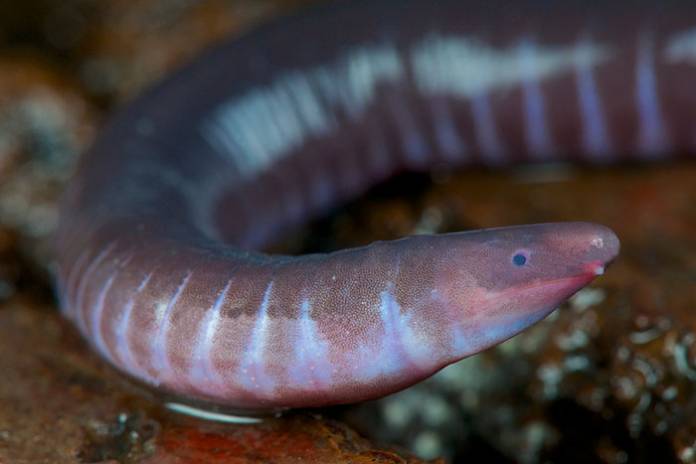
A study published by researchers in the journal iScience has revealed that caecilians have mouths that can deliver venomous bites. Caecilians are neither worms nor snakes, but they are amphibians that live deep in the soil in tropical climates of Africa, Asia, and the Americas. The ringed caecilian or Siphonops annulatus is related to salamanders and it has been evolving for millions of years.
The creatures secrete a slimy substance on their skin and they are also capable of releasing a toxic substance that can frighten predators away from their tails. Since they live deep in the ground and considered to be more wormlike than snakelike, scientists are surprised to find that the creature can deliver a powerful bite with its teeth-ringed little mouth.
“We think of amphibians—frogs, toads and the like—as basically harmless,” said Edmund Brodie Jr., a biologist at Utah State University and a co-author of the new study. “We know a number of amphibians store nasty, poisonous secretions in their skin to deter predators. But to learn at least one can inflict injury from its mouth is extraordinary.”
Although researchers are not 100% certain that the thick, viscous matter from the dental glands of the caecilian is venomous, they have strong reasons to believe it is given the fact that the arrangement and origin of its teeth are similar to those found in some venomous snakes. If it turns out that the dental glands can produce venoms, then it would indicate that the organ venom organs of caecilians developed much earlier millions of years ago before those of snakes.
Meanwhile, it is already established that the creature can discharge mucous from the glands of its skin so that it can burrow faster into the ground when predators are around. The mucous lubricant is poisonous but not venomous, given that it is passively delivered via the skin instead of via a bite. And then, a chemical analysis of the goo in the caecilian’s dental organs is found to contain a combination of mucus, lipids, and proteins with other properties contained in the venoms of other animals.
“Although we have shown the presence of dental glands and their possible role during predation, more evidence is still needed about the precise identity of the proteins present in the secretion, as well as data about the toxic potential of these compounds,” the researchers wrote as commentary to their study.
Marta Maria Antoniazzi of the Butantan Institute in Sao Paulo, Brazil, and a co-author of the study confirmed that she had been bitten by a caecilian some years ago and that it was painful. “It hurt a lot,” she said. “At the time, we couldn’t have even imagined.”
Source: nytimes.com











